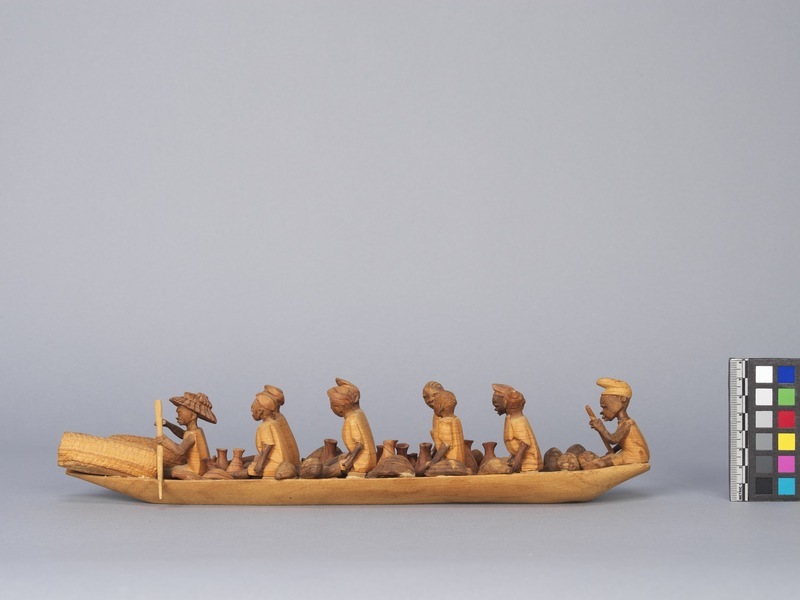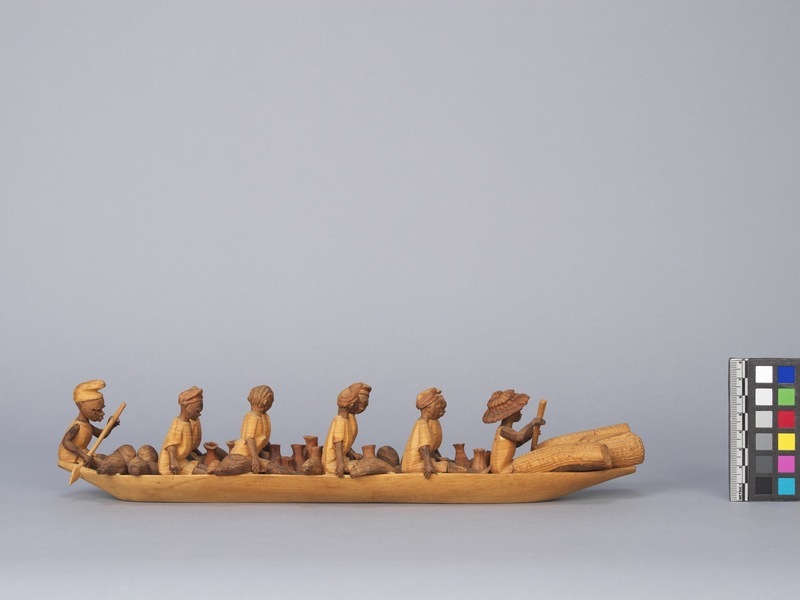Thorn Carving Item Number: 3326/33 from the MOA: University of British Columbia


Description
Thorn carving depicting a canoe full of people and goods. Ten figures are shown seated in the canoe. At the prow are a few large bundles and a person wearing a large hat paddling. Through the middle of the canoe are people seated in pairs with small jars and bundles around them. At the stern another person is paddling.
History Of Use
Thorn carvings are miniatures depicting a variety of scenes from Nigerian life. The carvings first began to be made circa 1930. The thorns vary in size; they can be as large as 12.7 cm long and 9.6 cm wide. The thorn wood is comparatively soft and easy to carve; they are traditionally carved by men.
Narrative
Most of the Nigerian objects in the Lieber collection were assumed to have been collected while Jack Lieber was living in Nigeria, 1965-1970. However one of the thorn carvings was made after 1971, so the dates are uncertain.
Cultural Context
craft; tourist art
Specific Techniques
The light yellow-brown thorn and the dark brown thorn come from the ata tree; the light red-brown thorn comes from egun trees. The parts are glued together with viscous paste made that was made from rice cooked with water.
Item History
- Made in Ibadan, Nigeria ? during 1970
- Owned by Jack Lieber before 2015
- Owned by Iris Lieber before June 18, 2018
- Received from Iris Lieber (Donor) on June 18, 2018
What
- Name
- Thorn Carving
- Identification Number
- 3326/33
- Type of Item
- carving
- Material
- atum thorn, egun thorn, adhesive and wood
- Overall
- height 7.2 cm, width 34.5 cm, depth 9.0 cm
Who
- Culture
- Yoruba
- Previous Owner
- Jack Lieber and Iris Lieber
- Received from
- Iris Lieber (Donor)
Where
- Holding Institution
- MOA: University of British Columbia
- Made in
- Ibadan, Nigeria ?
When
- Creation Date
- during 1970
- Ownership Date
- before 2015 and before June 18, 2018
- Acquisition Date
- on June 18, 2018
Other
- Item Classes
- carvings & sculpture
- Condition
- fair
- Accession Number
- 3326/0033